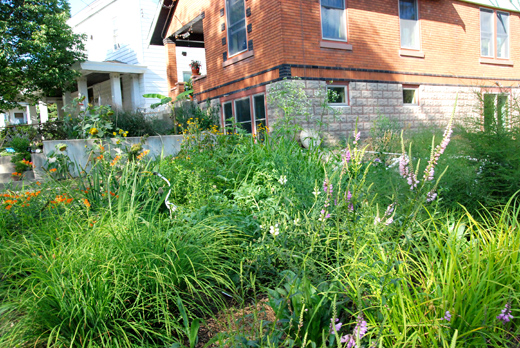 Rain gardens being installed in the Enright Ridge Urban Eco-Village are helping to lessen the amount of rain water entering the city’s sewer system and helping to keep the neighborhoods below dry.
Rain gardens being installed in the Enright Ridge Urban Eco-Village are helping to lessen the amount of rain water entering the city’s sewer system and helping to keep the neighborhoods below dry.
Two rain gardens have been completed along Enright Avenue in East Price Hill, one is half-completed, and another is on the drawing board.
"We've calculated how many gallons of rain water are kept out of the sewer system," says Nancy Sullivan, communications chair for the eco-village. "The more we can keep out of the sewer lines, the more we help to reduce the volume in the combined sewer overflows."
Essentially, the size of a rain garden is relative to the size of the area from which one wants to take rainwater.
Fill for the rain garden is a mixture of sand, composted manure, and clay soils.
But the key, Sullivan says, is to select the right type of plant material.
"You've got to get plant material, which isn't inexpensive," she says. "The objective is to plant with native plants with deep roots that will dig down below the fill and into the clay. When the roots die off, it creates additional channels for water to drain out."
Sullivan believes that the sustainable living practices at Enright Ridge can be duplicated easily in the rest of the region.
"Most other eco-villages get all people with the same educational and class backgrounds," she says. "Many abandon the city and go off and live somewhere else. But with this older neighborhood, we'll be more likely to convert people by recreating a real community and village values."
Writer: Kevin LeMaster
Source: Nancy Sullivan, communications chair, Enright Ridge Urban Eco-Village
Enjoy this story?
Sign up for free solutions-based reporting in your inbox each week.